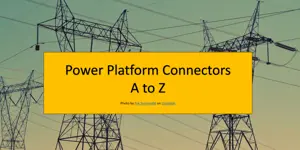
Power Platform Connector Building Blocks
20 Dec

The third article in the ten part Power Platform Connectors A to Z series by Apptigent CTO Eric Shupps, Power Platform Connector Fundamentals, is now available. Part three sets the user interface aside, delving into various sections of the connector definition file and the elements contained within each one. It begins with a more thorough discussion of connector security, focusing on OAuth, the most complex of the four available authentication methods to configure. It then moves on to the definition of request and response operations within action paths, covering verbs, parameters, properties, schemas, media types, and examples, including how to use tags to group and organize connector operations. Using this article and the previous articles in the series, creators should be able to build a custom connector from a blank template. They should also be able to understand what is happening behind the scenes to better analyze, troubleshoot, and optimize their connectors..
Below is a short excerpt from the article:
The security section within a definition is comprised of a securityDefinition node at the root of the definition structure and individual security nodes that can exist either at the root, providing a global implementation of one or more security definitions, within specific actions for localized security directives, or both. The securityDefinition node sets forth what security mechanisms are supported and defines their properties. A security node states which of the allowed mechanisms should be used when a connector action is invoked.
The complete content is now available as a free eBook: The Ultimate Guide to Power Platform Custom Connectors.
Recent Articles
Metrics That Matter: How to Measure Automation ROI Beyond Cost Savings
Avoiding the Five Most Common Mistakes in Agentic AI Projects
How Agentic AI is Redefining Business Process Management
Measuring the ROI of Human-Centric Document Processing Automation
Better Together: Humans and Artificial Intelligence in Healthcare Records Processing
